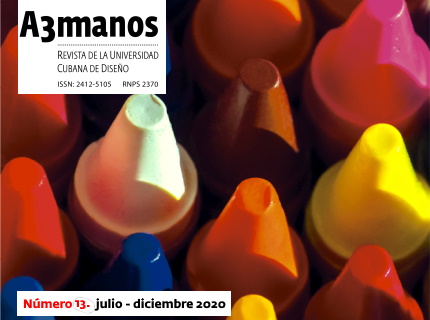The doctoral training strategy at the ISDi
##plugins.themes.bootstrap3.article.main##
Abstract
At the end of the second decade of the 21st century, Cuban Higher Education faces new challenges, as part of a society in permanent revolution, where it is necessary to seek new forms of articulation with the economy, production, services, and society as a whole.
The university must achieve the leading role that corresponds to it, not only in the scientific and technological revolution, in the creation and management of knowledge, sciences, technologies and permanent innovation, but also in its critical, mobilizing and transforming role in society. (Saborido, J. University, research, innovation and doctoral training for development in Cuba. Cuban Journal of Higher Education, 4-18. 2018)
The cloisters of excellence of the universities have as one of their fundamental indicators the number of professors and researchers with scientific degrees, in the various areas of knowledge of the specialties of their competence. (Veitia, F. Professional development of teachers: an essential quality indicator for excellence. Medicentro Electrónica vol.20 no.1, 30-43. 2016)
The Higher Institute of Design (ISDi), as a Faculty of the University of Havana, is the only one of its kind in Cuba, in which the careers of: Industrial Design and Visual Communication Design are studied.
Design is recognized as an area of scientific and technological knowledge by the National Commission of Scientific Degrees, the highest instance for the approval of doctoral programs in Cuba (Agreement 21.440.16: Agreements of the plenary session of March 16, 2016 of the National Commission of Scientific Degrees of Cuba.). (Herrera, M. Á. Design: between scientific design and artificial science. From September 25, 2017. Retrieved on July 1, 2019, from http://www.nosolousabilidad.com/articulos/diseno_cientifico. htm.), as such, results from the complex integration of diverse sciences, which makes it an environment of convergence of different knowledge, ranging from Technical Science, Communication or Art, such is its complexity.
In short, designers now have the possibility of defending a scientific thesis in the areas of knowledge of their training and professional skills, endorsed by the National Commission of Scientific Degrees of Cuba.
Currently the ISDi has twenty doctors in different branches of knowledge, as well as twenty-five doctoral students in Design topics, at various stages of development.
The strategy for training doctors in the ISDI has peculiarities that facilitate the process and create conditions for the best performance of doctoral students, among which are: collective tutorials, learning communities, accompaniment, supervision.
There is a direct link between research groups, research lines and doctoral topics, depending on the solution of scientific problems of society and the university in particular.
Design thinking, its theoretical systematization in the academic field, has gained visibility in the last decade as a tool to reconcile different epistemological positions and produce applied, synthetic knowledge situated in contexts, spaces and time.
The strategy of training doctors in Design allows researchers to achieve original contributions in the disciplines of Design of the highest quality, today it is an international reality in a globalized world and a challenge in the Cuban context.
##plugins.themes.bootstrap3.article.details##

This work is licensed under a Creative Commons Attribution-NonCommercial-ShareAlike 4.0 International License.
- Attribution — You must give appropriate credit , provide a link to the license, and indicate if changes were made . You may do so in any reasonable manner, but not in any way that suggests the licensor endorses you or your use.
- NonCommercial — You may not use the material for commercial purposes .
- No additional restrictions — You may not apply legal terms or technological measures that legally restrict others from doing anything the license permits.
- ShareAlike — If you remix, transform, or build upon the material, you must distribute your contribution under the same license as the original. NOTE: This point applies to numbers 1 to 20 of the magazine with the previous CC-BY-NC-SA 4.0 license. Does not apply to the new CC BY-NC 4.0 license from Volume 11, Number. 21 (2024).
References
Castro, O., Betancourt, J.L., Arrufat, E. (2015) Investigación y doctorados en Diseño. ¿Necesidad o esnobismo? A3Manos. No. 2. P.129-140.
Herrera, M. Á. (25 de Septiembre de 2017). Diseño: entre el diseño científico y las ciencias de lo artificial. Recuperado el 1 de Julio de 2019, de http://www.nosolousabilidad.com/articulos/diseno_cientifico.htm
Saborido, J. (2018). Universidad, investigación, innovación y formación doctoral para el desarrollo en Cuba. Revista Cubana de Educación Superior, 4-18.
Veitia, F. (2016). Desarrollo profesional de los docentes: un indicador esencial de calidad para la excelencia. Medicentro Electrónica vol.20 no.1, 30-43.






















